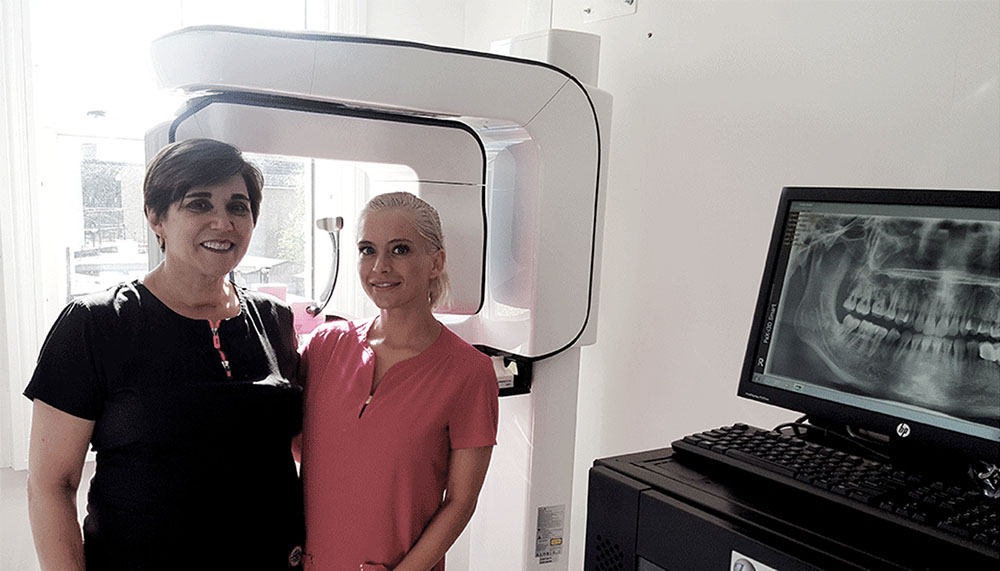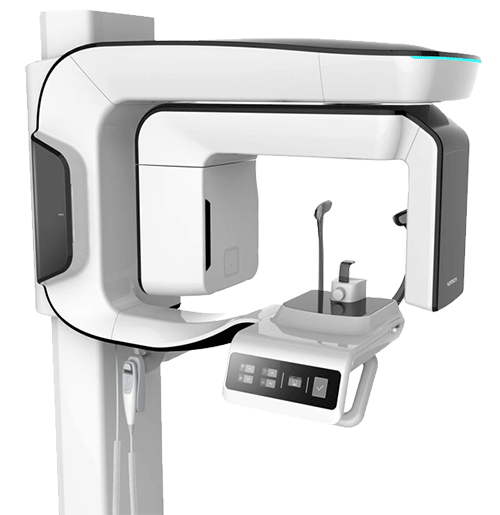Dr Winifred Van Rensburg describes the varied roles played by the PaX-i3D Smart imaging system at her Essex-based practice.

After doing my research and reading reviews, I chose the Vatech PaX-i3D Smart because I thought that it had everything I needed from a CBCT system. I received a flyer through the post demonstrating the 3D Rental Scheme available from Vatech and the initial reasons to why I chose the rental plan was because it was highly affordable – the scanner not only pays for itself but it is actually profitable. One CBCT and one panoramic image per week would pay for the rental in my practice, but I perform at least one of these every day.
It is the hassle-free alternative to purchasing a scanner as I don’t need to worry about maintenance with an included annual service visit by a Vatech engineer, who I have found to be professional, punctual and responsive; a full warranty; an annual PHE test and six hours of user training. The training was very helpful, informative and thorough, with every question answered and easy-to-follow steps. In addition, the multiple options available at the end of the 3-year contract of the 3D Rental Scheme is greatly appealing as a decision on a substantial investment on a CBCT machine is not easy.
One option allows me to pay the difference in order to purchase the machine and another option allows me to upgrade to a newer model, which I find more attractive as is keeps me up to date with the latest technology. The learning curve to achieve successful operation was short and the software, as well as the actual machine, was easy to use and manage.
The image quality is fantastic, but the thing that makes the PaX-i3D Smart different to other CBCT scanners that I have used, is that I can manipulate the image to the area of interest and the angulations that I can achieve are excellent.

For example, if I want to look at one specific tooth, I can isolate that area very effectively, which I think is a very positive aspect of this machine. As well as being user-friendly the PaX-i3D Smart is very patient-friendly, there is no discomfort for them and it is a low dose exposure, so it reduces any unnecessary X-ray radiation.
Further still, it facilitates a lot of interaction between my patient and I – they don’t need to be a dentist to understand what I’m showing them on the CT scan.
POSITIVE ASPECTS
I qualified in 1985 from the University of Pretoria in South Africa. I went into private practice immediately and had my own practice in Pretoria until 2003 when I moved to the UK. Here I gained a Diploma in Sedation and Pain Management from University College London as well as a Diploma in Implant Dentistry from the Royal College of Surgeons. I have worked in private dentistry for 33 years now and I have practiced all modalities of dentistry.
At my practice the aim is to offer patients a full range of private cosmetic and general dental treatments and as such, I have invested in the latest technology. I specialise mainly in implant dentistry and the CBCT machine enhances my workflow significantly. It provides me with all the information I need to inform the patient immediately about the following:
• Yes, there is enough bone available to do an implant/implants safely
• No, not enough bone – will need grafting
• Areas of concern like the IAN or the sinus
• Other possible pathology.
I find it invaluable with oral surgery procedures as well. In a case (20-year-old female) where I planned to remove the impacted wisdom teeth, I noticed on a PA X-ray that the periodontal ligament space on the root of the LL7 between the LL7 and LL8 was not clearly visible. I decided to take a CBCT and I found that the D root of the LL7 had been resorbed by the LL8. The resorption was into the nerve and the LL7 would have needed root canal treatment. That changed our treatment plan completely – we extracted the 7, allowed the 8 to erupt and then closed the space orthodontically.
I also use it for orthodontics. Recently, had a little boy that had two canines that were palatally impacted. This was very clear on the CBCT scan. On a traditional radiograph, I would have been able to see the impaction, but I would not have been able to determine the position of the teeth.
I also use CBCT scans a lot with regards to root canal treatment because it gives me a much better view of the position and the length of the roots as well as the pathology around them. Often, on a normal X-ray, the pathology on a palatal root is obscured by buccal roots, palatal bone, sinus overlapping. On the CBCT it is very clear.
The CBCT reveals so much that is not visible on a normal X-ray, which makes it easier to visualise everything with greater clarity. In fact, I would say to those practitioners who are not using 3D imaging technology yet, that I no longer trust my 2D imaging anymore. Although I still use normal X-rays when diagnosing decay, for everything else I feel as if I was ‘working blind’ without my CBCT make the complete 3D workflow a reality in my practice.
For now, I have found Vatech to be extremely professional and the 3D Rental Scheme that was offered to me has suited me perfectly. The system was delivered on time and the Vatech team have always been available and pleased to help with any queries I’ve had. My experience of Vatech is certainly very positive.
| PUBLISHED IN: | Private Dentistry, March 2018 |
| DENTIST: | Dr. Winifred van Rensburg |
| EQUIPMENT: | PaX-i 3D Smart |
| DENTAL PRACTICE: | Rainbird House Dental Practice |
| ADDRESS: | 6 Warescot Road, Brentwood CM15 9HD |
| TELEPHONE: | 01277 219333 |
| WEBSITE : | rainbirdhouse.co.uk |